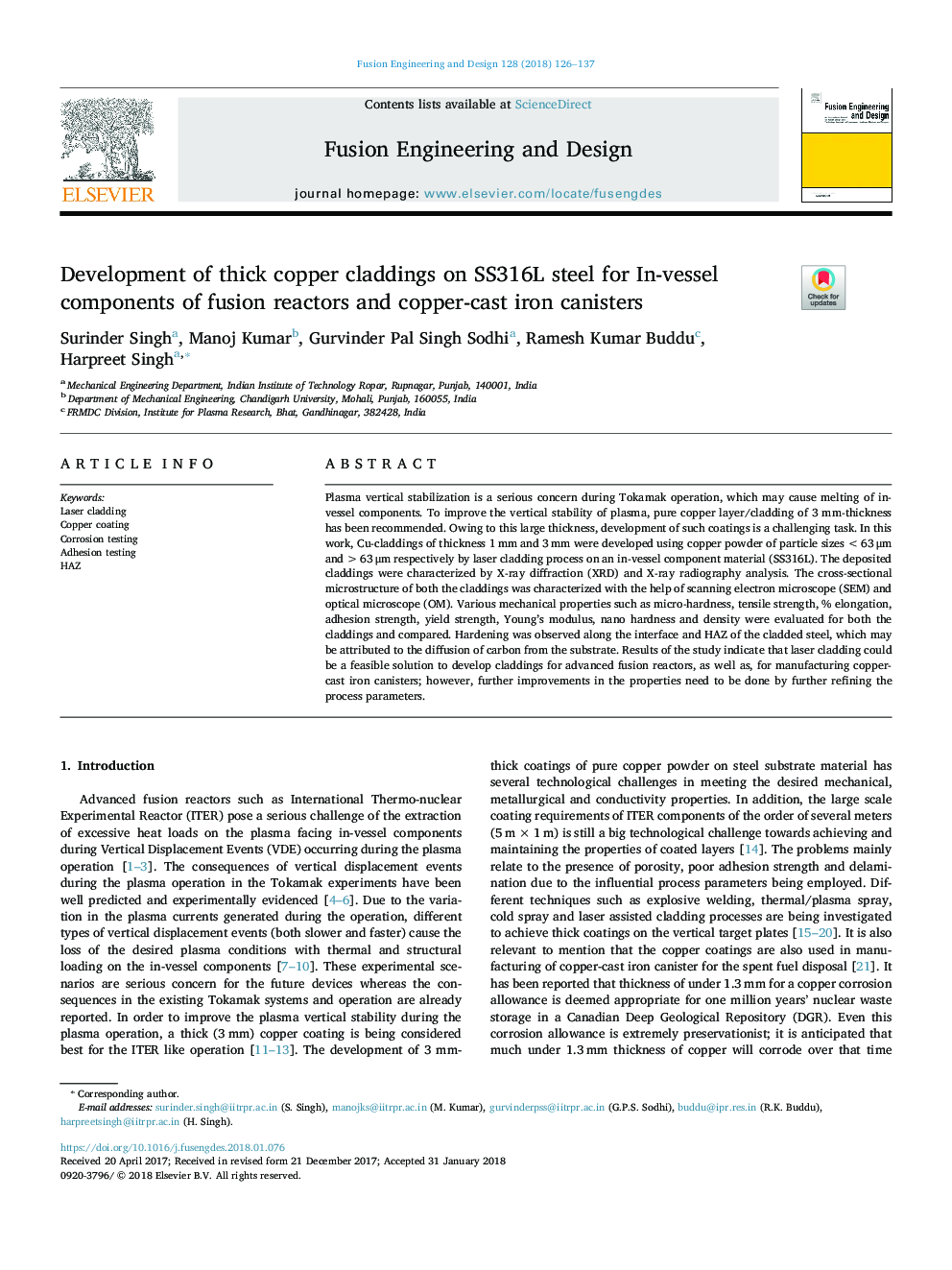| Article ID | Journal | Published Year | Pages | File Type |
|---|---|---|---|---|
| 6743207 | Fusion Engineering and Design | 2018 | 12 Pages |
Abstract
Plasma vertical stabilization is a serious concern during Tokamak operation, which may cause melting of in-vessel components. To improve the vertical stability of plasma, pure copper layer/cladding of 3 mm-thickness has been recommended. Owing to this large thickness, development of such coatings is a challenging task. In this work, Cu-claddings of thickness 1â¯mm and 3â¯mm were developed using copper powder of particle sizes <63â¯Î¼m and >63â¯Î¼m respectively by laser cladding process on an in-vessel component material (SS316L). The deposited claddings were characterized by X-ray diffraction (XRD) and X-ray radiography analysis. The cross-sectional microstructure of both the claddings was characterized with the help of scanning electron microscope (SEM) and optical microscope (OM). Various mechanical properties such as micro-hardness, tensile strength, % elongation, adhesion strength, yield strength, Young's modulus, nano hardness and density were evaluated for both the claddings and compared. Hardening was observed along the interface and HAZ of the cladded steel, which may be attributed to the diffusion of carbon from the substrate. Results of the study indicate that laser cladding could be a feasible solution to develop claddings for advanced fusion reactors, as well as, for manufacturing copper-cast iron canisters; however, further improvements in the properties need to be done by further refining the process parameters.
Related Topics
Physical Sciences and Engineering
Energy
Energy Engineering and Power Technology
Authors
Surinder Singh, Manoj Kumar, Gurvinder Pal Singh Sodhi, Ramesh Kumar Buddu, Harpreet Singh,
